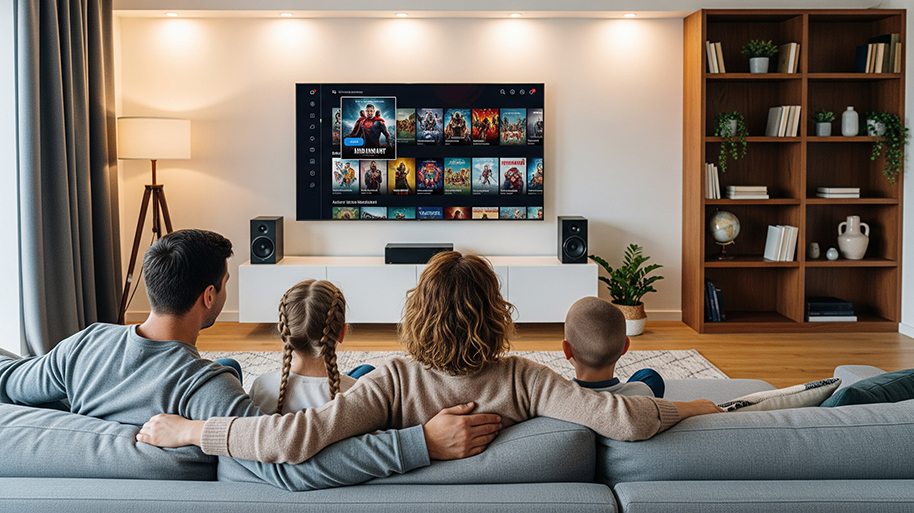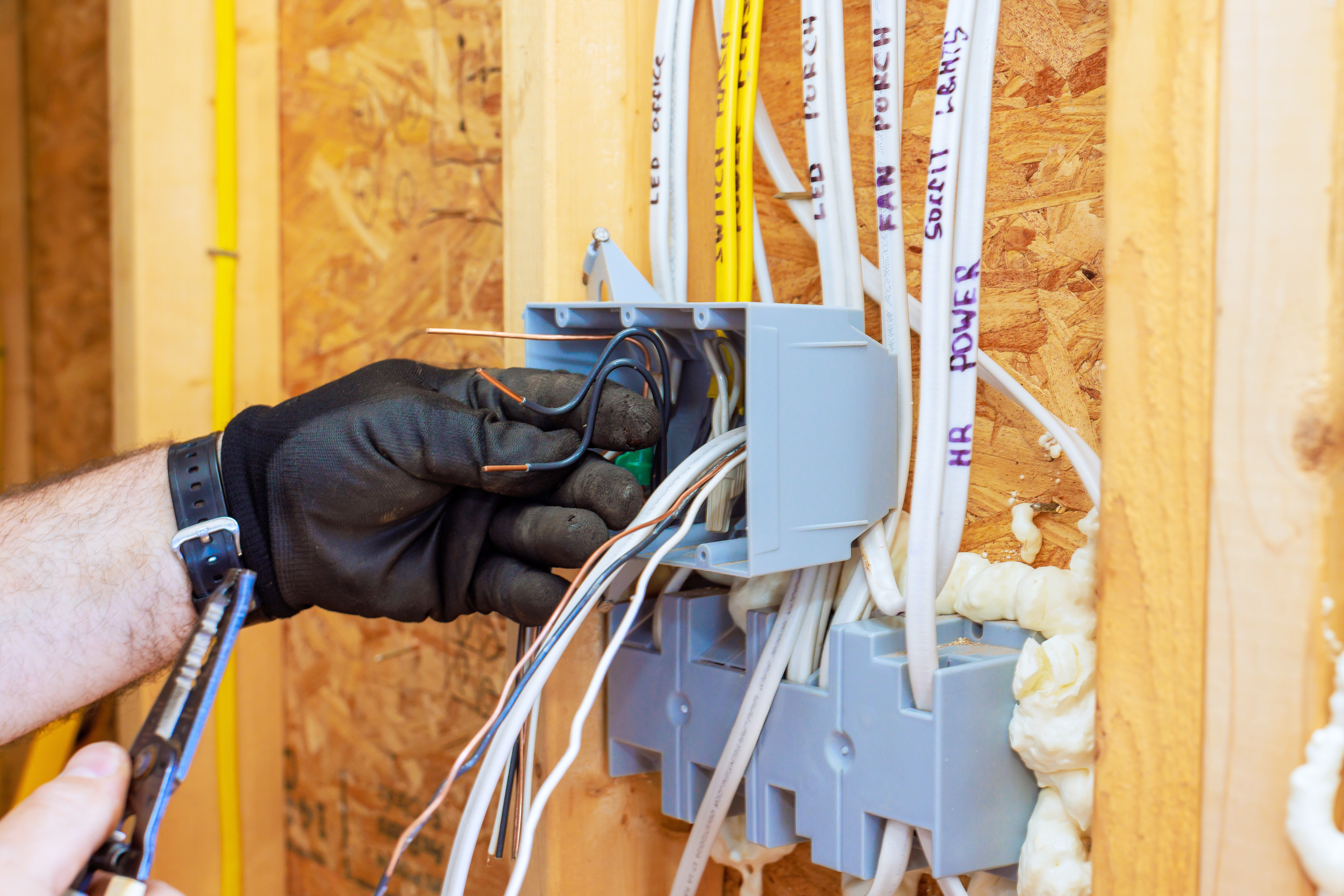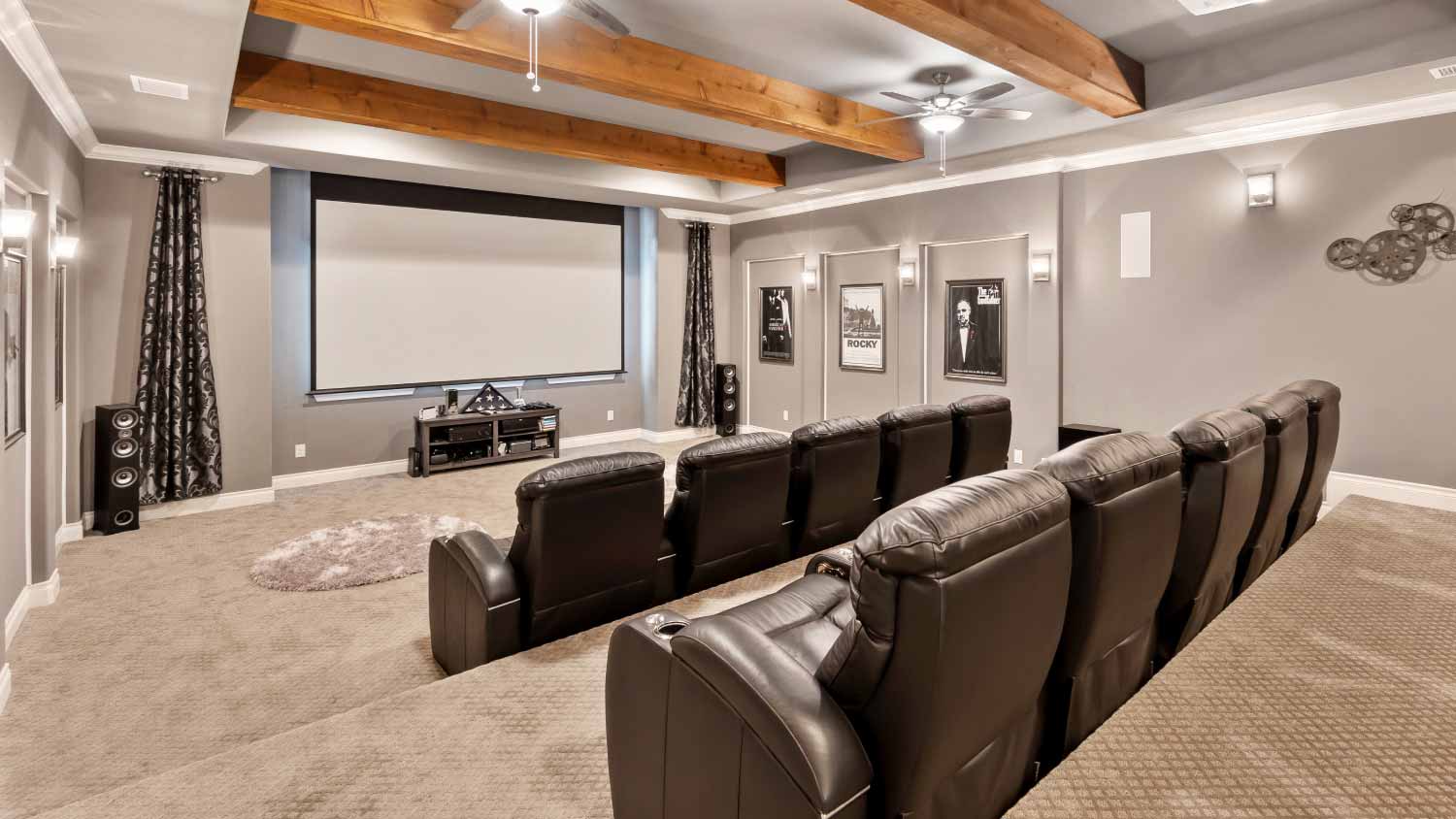
Find out what impacts TV repair cost. Learn average prices, key cost factors, and how to save when repairing your TV.
Bigger isn’t always better when it comes to picking the right TV size


You want to purchase a TV that falls within 30 to 40 degrees of your field of view for the most optimal viewing experience.
The further away you are from the TV, the larger the screen generally needs to be.
The most common TV size in North American households is 55 inches but is expected to increase to 65 inches based on purchasing numbers.
Mounting a TV allows you to ignore entertainment system restrictions that could impact size selection.
Between resolution, type of screen, and whether you need streaming access, there’s still one question at the top when buying a TV: “What size should I get?” There’s no go-to answer. The reality of the situation is that it depends on the room and its layout. Here’s how to make the best choice for your space.
There’s simply not a one-size-fits-all when it comes to TVs. There’s also only a limited number of sizes on the market because TV companies are limited to how display manufacturers can cut the screen. Currently, you can find TVs with these increments:
32 inches
40 inches
43 inches
50 inches
55 inches
60 inches
65 inches
70 inches
75 inches
80 inches
85 inches
There are a few options out there that will go above or below these sizes, but they’re few and far between. You may also find slight variations in size, such as a 61-inch TV, but these are often limited to brands and are not the standard.
While the size of your TV is certainly important when shopping, there are other key factors to consider to ensure you find the best option for your needs. You want your investment to last, so add the following criteria to your search.
When purchasing a new TV, resolution plays a vital role in determining the clarity and sharpness of displayed content. Measured in pixels, resolution determines the level of detail presented, with HD (720p), Full HD (1080p), and 4K Ultra HD (2160p) resolutions providing progressively clearer and more detailed images. Choosing among these resolutions depends on various factors, such as the size of the television, viewing distance, and content accessibility. For larger TVs or closer viewing distances, higher resolutions like 4K may be beneficial, but it is essential to consider both the availability of 4K content and your budget limitations.
Display technology is a critical TV metric that impacts the visual experience, which is a bit different than resolution. OLED, QLED, and LED/LCD are the three primary technology options. OLED boasts superior black levels, infinite contrast ratios, and individual pixel illumination, providing deep blacks and vibrant colors. QLED uses quantum dots to improve color and brightness, ensuring accurate colors and better visibility in well-lit rooms at a more budget-friendly cost. LED/LCD TVs, which are more common and affordable, use a backlight system to illuminate liquid crystals, with top-of-the-line models featuring local dimming to enhance contrast ratios.
Depending on your unique needs, there are a few other features that may be beneficial to consider. If having a smart TV is of interest, take into account the operating system, user-friendly interface, and built-in voice control for convenient navigation. To ensure app availability, check if the TV has an extensive app store for streaming services.
If aesthetics are a concern, consider the design of the TV. Is there a desired thickness that would best mesh with your home decor or an optimal color? Don't forget to think about how the TV will look visually in your space.
Performance and connectivity features play a crucial role in homes with gamers. The refresh rate, which is measured in Hertz (Hz), affects motion smoothness, especially for fast-paced content like gaming. HDMI and USB ports are necessary for connecting devices such as gaming consoles and sound systems.
Picking a TV is actually a little bit of science. It’s important to note that 4K TVs are considered the standard resolution for TVs now, so the science behind this section will pertain to this resolution only. Lower-resolution models are harder to find and are often limited to smaller TVs (those 40 inches and below) and you’re often going to be close to these TVs anyway to not notice a difference in quality.
The rule of thumb for TV distance and size is the further away you are from the TV, the larger the screen size you’re going to need. Generally speaking, humans have a 200-degree field of view and you want the TV to fall within 30 to 40 degrees from the center of your view, depending on what type of media you prefer to consume. Here’s a list of recommended viewing distances based on the TV size:
| Screen Size | Recommended Viewing Distance at 30 Degrees |
|---|---|
| 40 inches | 5.5 feet |
| 45 inches | 6.1 feet |
| 50 inches | 6.8 feet |
| 55 inches | 7.5 feet |
| 60 inches | 8.2 feet |
| 65 inches | 8.9 feet |
| 70 inches | 9.5 feet |
| 75 inches | 10.2 feet |
| 80 inches | 10.9 feet |
| 85 inches | 11.6 feet |
Now, you may be a movie fanatic and want the best possible theater-like experience. In this case, you’ll want to actually increase your recommended degrees to 40, and move closer to the TV. For those looking for this type of view distance, here’s a list of recommended distances based on TV size:
| Screen Size | Recommended Viewing Distance at 40 Degrees |
|---|---|
| 40 inches | 4 feet |
| 45 inches | 4.5 feet |
| 50 inches | 5 feet |
| 55 inches | 5.5 feet |
| 60 inches | 6 feet |
| 65 inches | 6.5 feet |
| 70 inches | 7 feet |
| 75 inches | 7.5 feet |
| 80 inches | 8 feet |
| 85 inches | 8.5 feet |

Almost all TVs on the market have two ways to display it: propping it up on its included feet, or using the mounting holes to mount it to the wall. When deciding whether to use the TV stand vs mounting, one thing you need to consider when purchasing the perfect TV is whether you have an entertainment system large enough to even have the TV. If you’re going for a 65-inch TV but your entertainment system only supports up to 55 inches, you’re likely to have to either buy a new entertainment system—or return the TV.
To avoid this, you have the option to mount the TV and forgo the worry of having enough space on or in the entertainment system. The cost of mounting a TV is around $265, if you hire a TV mounting service near you.

While it’s common to have a TV in the living room of the home, you may want one in several areas of the home as well. This may range from the bedrooms to the bathroom or even an outdoor TV. The smaller the room, the less space you’re going to have to work with, but this typically also reduces the viewing distance, evening itself out.
The most common TV size is 55 inches for the family room or living room. This puts the optimal viewing distance in most households at around 7.5 feet, or 5.5 feet for those looking for a more theatrical experience. However, there are trends pointing towards 65-inch TVs being the most commonly purchased in the last couple of years, so the average size is expected to increase.
In certain circumstances, a projector is viewed as a superior option to a TV, due to its ability to provide a larger and more immersive viewing experience. A primary advantage of a projector is its ability to project images onto a much larger screen than a TV, delivering a cinematic atmosphere within the comfort of one's own home. As a result, a projector is an excellent choice for a home theater or living space where individuals desire a more expansive and engaging visual environment. The impressive size of the projected image heightens the viewing experience for movies, sports, or gaming.
One benefit of a projector is its flexible screen size, and while this certainly helps make the viewing experience feel larger than life, it's not primarily advantageous for homes with expansive space. A projector can be a valuable option for smaller rooms where space is a concern, as they take up much less wall or floor space than a traditional TV.
From average costs to expert advice, get all the answers you need to get your job done.

Find out what impacts TV repair cost. Learn average prices, key cost factors, and how to save when repairing your TV.

Discover the average surround sound installation cost, key price factors, and tips to save. Get expert insights to plan your home audio project.

Explore home theater installation costs. Get detailed breakdowns, cost factors, and expert tips to help you budget and plan your dream home theater.

Discover the average cost of home theater wiring, including labor, materials, and key factors that impact your total price. Learn how to budget and save on your project.

For a clean and safe installation, hire someone to mount the TV on the wall. Know how to prepare and what questions to ask before you call a pro for help.

Discover the average home theater repair cost, key price factors, and tips to save. Get transparent estimates and plan your repair with confidence.